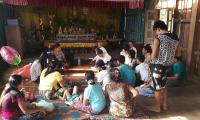Sector wide impact assessments

A sector wide impact assessment (SWIA) looks at the actual and potential impacts of a specific business sector in a particular geographic context.
The SWIA has different levels of analysis in order to build a complete picture of the potential impacts of an entire sector on society and human rights.
A sectoral view will help stakeholders see the “bigger picture” of potential negative impacts of a sector’s activities, as well as potential opportunities for positive human rights outcomes, and to make choices based on this broader perspective.
Target audience
The target audiences of SWIA are states, businesses, local communities, workers and trade unions, civil society organisations and the media, as well as development actors.
The methodology
A SWIA is carried out according to a set of widely accepted impact assessment steps. The process involves both desk-based and field research.
The original methodology for SWIA was developed by the Danish Institute for Human Rights and the Institute for Human Rights and Business (IHRB), as part of the programme of work of the Myanmar Centre for Responsible Business (MCRB), which the Institute and IHRB jointly founded.
A SWIA differs from project-level impact assessments in a number of ways.
A SWIA:
- Addresses multiple levels of analysis: project level impacts, cumulative impacts and sectoral impacts
- Aims to shape policy, law and projects
- Can form the basis for future project-level environmental, social and/or human rights impact assessments
- Involves more extensive field research
- Takes a broad view of human rights impacts, and
- Serves as a public resource.
Four SWIAs have been completed, focusing on: the oil and gas sector, the tourism sector, the mining sector and information and communications technology - the ICT sector.



